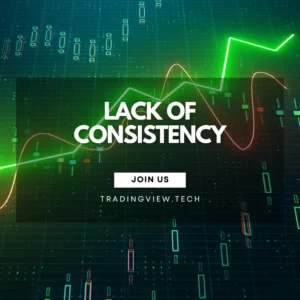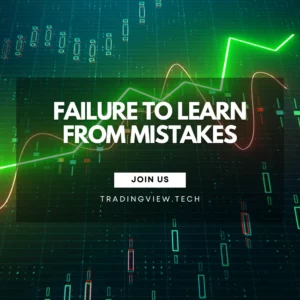In today’s fast-paced financial markets, automation has become a game-changer for traders of all levels. Automated trading strategies, also known as algorithmic trading, allow traders to execute buy and sell orders with minimal human intervention. These systems are powered by predefined rules, advanced algorithms, and real-time data analysis, enabling them to react instantly to market movements. While once the domain of institutional investors and hedge funds, automation is now widely accessible to retail traders through specialized trading platforms and software solutions.
The rise of automated trading is driven by its ability to eliminate emotional decision-making, optimize trade execution, and operate 24/7 across global markets. Traders no longer need to constantly monitor charts and manually execute trades; instead, they can rely on sophisticated algorithms to handle everything from order placement to risk management. This shift has significantly increased efficiency, reduced trading errors, and opened new opportunities for traders to capitalize on market fluctuations without being physically present.
However, while automation offers undeniable advantages, it is not without challenges. Setting up a successful automated trading strategy requires a deep understanding of market mechanics, programming knowledge (or access to specialized tools), and rigorous backtesting to ensure profitability. Additionally, external factors such as market volatility, liquidity issues, and technical failures can impact performance. In this article, we will explore how automated strategies function, their benefits and risks, and some of the most widely used approaches by traders today.
How Automated Strategies Work
Automated trading strategies function by following a set of predefined rules that determine when and how trades are executed. These strategies are built on mathematical models and historical data analysis, allowing them to identify profitable trading opportunities without human intervention. At their core, automated trading systems rely on three key components: trading algorithms, execution mechanisms, and risk management protocols.
- Trading Algorithms – These are the heart of any automated strategy. They analyze vast amounts of market data, including price movements, volume, and technical indicators, to identify patterns and predict potential price changes. Algorithms can be based on various approaches, such as trend-following, mean reversion, or statistical arbitrage. More sophisticated systems may incorporate machine learning and artificial intelligence to adapt to changing market conditions.
- Execution Mechanisms – Once a trading opportunity is identified, the system automatically places orders based on predefined parameters. This includes specifying entry and exit points, order types (market, limit, stop-loss), and trade size. Execution speed is a crucial advantage of automation, as it allows traders to capitalize on even the smallest market fluctuations before human traders can react.
- Risk Management Protocols – Effective automated strategies incorporate risk controls to protect capital and limit potential losses. These include stop-loss orders, position sizing rules, and real-time monitoring to prevent excessive drawdowns. Some advanced systems even use dynamic risk management techniques that adjust trading parameters based on market conditions.
Automated trading strategies can operate in various ways, ranging from fully automated systems that run without any human oversight to semi-automated solutions that provide trade recommendations while allowing traders to approve executions. Regardless of the level of automation, the success of these strategies depends on continuous optimization, rigorous backtesting, and adapting to market changes.
Advantages and Risks of Automation
Automated trading offers numerous advantages that have made it a popular choice among traders seeking efficiency and consistency. One of the most significant benefits is the elimination of emotional decision-making. Human traders often struggle with psychological factors such as fear, greed, and overconfidence, which can lead to impulsive or irrational trading decisions. Automated strategies, on the other hand, strictly follow predefined rules, ensuring discipline and objectivity in trade execution.
Another key advantage is speed and accuracy. Automated systems can process vast amounts of market data in real time and execute trades within milliseconds. This allows traders to capitalize on short-lived market opportunities that would be impossible to exploit manually. Additionally, automation enables round-the-clock trading, making it particularly valuable in global markets such as forex and cryptocurrencies, where trading occurs 24/7.
Backtesting is another major benefit of automated trading. Traders can test their strategies against historical data to evaluate performance and refine their approaches before risking real capital. This helps in identifying strengths and weaknesses, optimizing parameters, and improving overall profitability. Furthermore, automation enhances risk management by implementing strict stop-loss levels, position sizing rules, and other protective measures that reduce exposure to unexpected market movements.
However, automated trading is not without risks. One of the primary challenges is system reliability. Technical failures, software bugs, or connectivity issues can disrupt trading operations and lead to significant losses. Market conditions can also change rapidly, rendering a previously profitable strategy ineffective. Overfitting, where a strategy is excessively fine-tuned to past data but fails in live conditions, is another common pitfall.
High-frequency trading (HFT) and algorithmic strategies also raise concerns about market fairness. Large institutions with advanced infrastructure often have an edge over retail traders, creating an uneven playing field. Additionally, excessive reliance on automation can lead to flash crashes, where algorithms trigger a chain reaction of rapid price declines. Traders must continuously monitor and adapt their strategies to mitigate these risks and maintain long-term success.
Popular Automated Trading Strategies
Automated trading encompasses a variety of strategies, each designed to exploit specific market conditions and trading opportunities. One of the most widely used approaches is trend-following, where algorithms identify and capitalize on sustained price movements. These strategies rely on indicators such as moving averages and momentum oscillators to determine entry and exit points, making them effective in trending markets.
Mean reversion is another common strategy, based on the principle that asset prices tend to revert to their historical average over time. Automated systems monitor price deviations and execute trades when an asset is deemed overbought or oversold. This approach is particularly effective in range-bound markets but can struggle during strong trends.
Arbitrage trading takes advantage of price discrepancies between different markets or exchanges. For example, in forex trading, an algorithm may simultaneously buy and sell the same currency pair on different platforms to profit from small price differences. Arbitrage opportunities are short-lived, making automation essential for rapid execution.
Market-making strategies involve continuously placing buy and sell orders to profit from bid-ask spreads. Automated systems adjust their orders dynamically based on market liquidity and volatility. This approach is commonly used by institutional traders and high-frequency trading firms.
Some advanced traders also use machine learning-based strategies, where algorithms analyze vast datasets to detect patterns and predict market movements. These systems can adapt to changing conditions and improve over time, offering a competitive advantage. However, they require significant computing power and expertise to develop and maintain.
Each automated trading strategy has its own strengths and weaknesses, and traders must carefully choose the approach that aligns with their risk tolerance, market knowledge, and technical capabilities. Proper optimization, risk management, and continuous monitoring are essential for long-term success in algorithmic trading.



